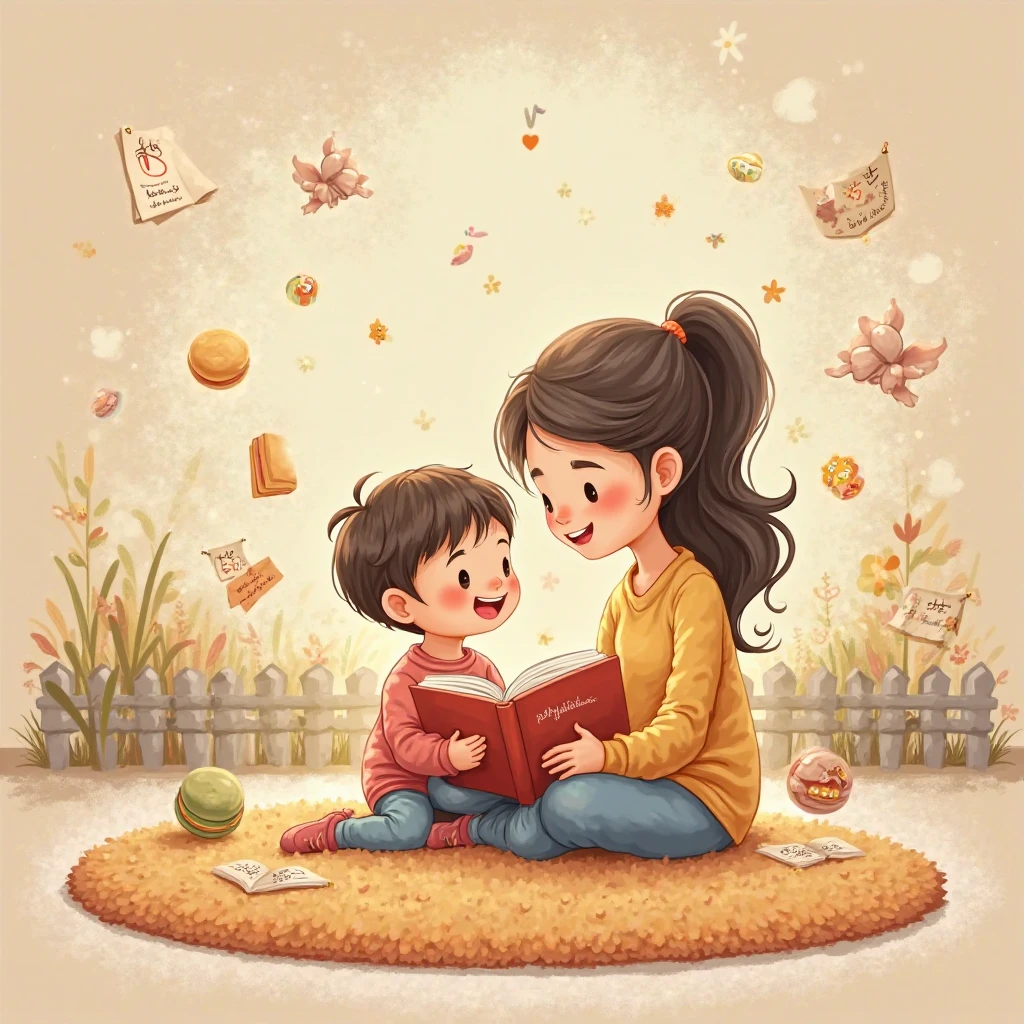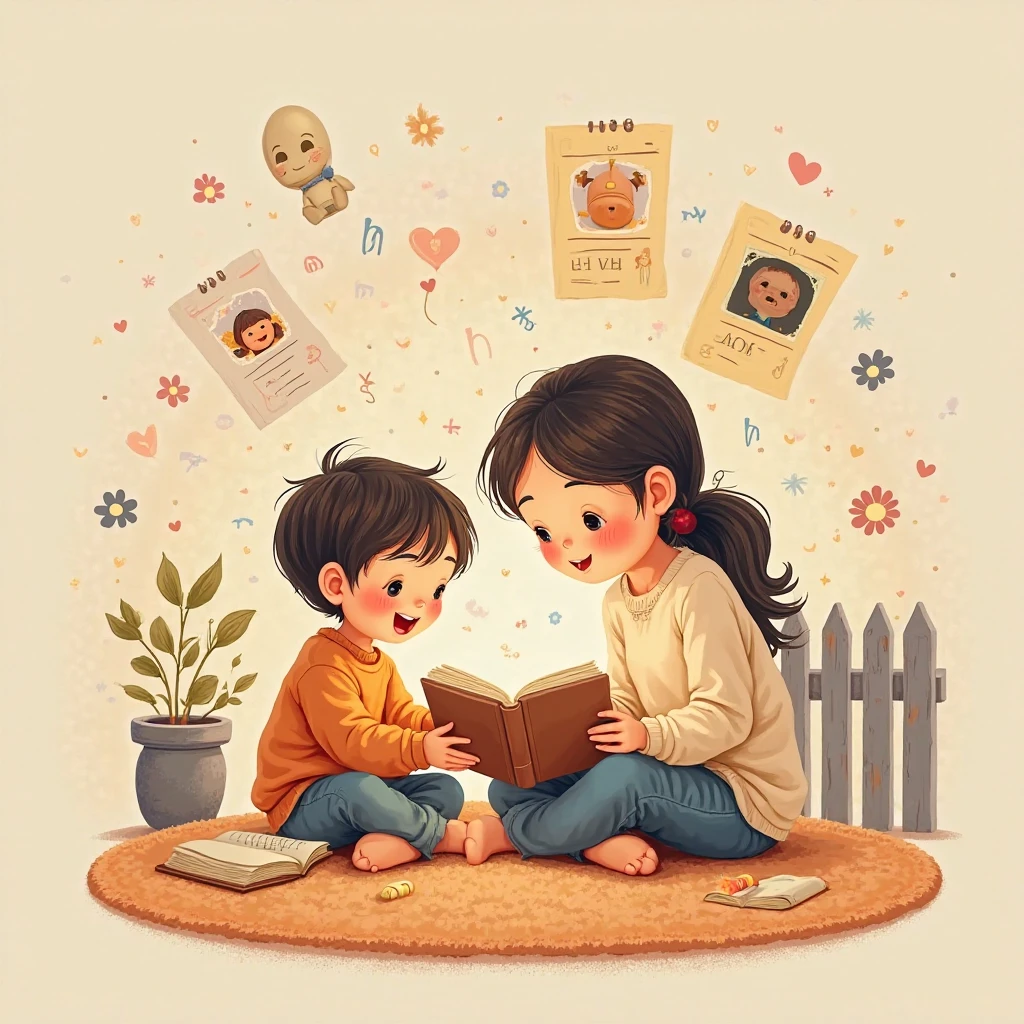Last week, we talked about how to help older kids quit their phone addiction. Many moms messaged me privately asking, “What do I do if my little one is already grabbing for the phone before they even start school?” Today, I’m going to share from the heart about how my daughter went from being a “book-tearer” to a “little bookworm,” and I’ll guide you step-by-step on how to make reading fun in everyday life!
1. Why should you cultivate a “little bookworm” from a young age? Here are three truths you should know as soon as possible
- Start early with character development
My neighbor’s 5-year-old, Tangtang, once went to the zoo and exclaimed upon seeing a flamingo, “Mom, look! ‘A crane standing among chickens’!” The other parents were amazed and called her a “little genius.” This was actually from when I taught her the word “crane” while reading “Animal Encyclopedia” and casually mentioned the idiom. - Exam reforms are getting serious
My cousin, who is a teacher, told me that third-grade Chinese exams now include 800-word reading materials, which is like half a picture book! Kids who have been reading picture books since young can read questions twice as fast as their peers. - Social skills are hidden in books
Last week, I took my daughter to a birthday party where the 4-year-old birthday girl recited “The Three Little Pigs” in a cute voice and even asked, “Why didn’t the big bad wolf use an excavator?” While all the moms laughed, they were also sneakily checking how the other mom taught her.
2. Four steps to start from scratch (with 20 tested and effective games)
【Stage One】Indestructible “toy books” (1-2 years old)
- Choose cloth books like choosing toys: ones with crinkly paper, chewable parts, and pop-up mechanisms
- Daily must-do: Use books as building blocks to build a castle, while saying, “This is the house of the ‘door’ character, baby~”
【Stage Two】Drama queen mom’s performance time (2-3 years old)
- Turn “The Very Hungry Caterpillar” into a soap opera:
Monday, use an apple to teach the word “round,” Tuesday, use a pear to teach “yellow,” and on the weekend, let the child direct and change the ending - Turn the supermarket into a word recognition playground:
“Baby, quickly find the ‘milk’ character guard!” — Play a Chinese character treasure hunt in the aisles
【Stage Three】Learning characters is like playing a puzzle (3-4 years old)
- Pictographic character guessing game:
🌙 “A crescent moon hanging in the sky” (moon)
🔥 “Three sticks roasting sweet potatoes” (fire) - “Chinese character hunter” on the road:
Stomp your feet when you see the “stop” character, spin around when you see the “open” character
【Stage Four】Little story king (4-6 years old)
- Three-piece question set:
- “What did the little turtle just say?” (Memorizing lines to practice memory)
- “What would you do if you were the judge?” (Developing critical thinking)
- “Shall we change the ending of the story?” (Sparking creativity)
- Our family’s unique “mismatched theater”:
Let the turtle race a car, have the rabbit be the judge, the kids will laugh and roll around while learning advanced words like “fairness” and “innovation”

3. Avoid these pitfalls at all costs! Sharing hard-learned lessons
- “Must recognize 5 characters a day” ➡️ Result: The child runs away at the sight of books
✅ The right way: Find the “small” character on a cookie package, reward a star for each one found - “Finger pointing must be perfect” ➡️ Result: The child focuses on the mom’s expression
✅ Smart approach: If the child points backwards, treat it as a mirror game, “It’s fun to read backwards too!” - “Other kids can recite poems” ➡️ Result: Anxiety spreads to the child
✅ Heartwarming strategy: Turn “Ode to the Goose” into a finger play, learn while playing during bath time
4. Practical guide to character recognition games
- 【Home Edition】
Quilt maze: Stick characters on the quilt with sticky notes, pass through only if recognized correctly
Bubble word burst: Write characters on the table with soapy water, blow them away with a straw after recognizing correctly
Sock matching: Write “left” and “right” on socks, morning dressing race - 【Outdoor Edition】
License plate battle: Find cars with “Beijing” or “Shanghai” plates, collect 10 for an ice cream
Elevator challenge: Read the floor number before pressing the button on each floor
Leaf character puzzle: Arrange “big” and “small” characters with twigs in a leaf pile - 【High-Tech Edition】
AR character cards: Recognize the “fire” character through flame animations
Smart speaker challenge: “Xiaomi, who are the friends of the ‘morning’ character?”
Surveillance camera Easter egg: Stick the “home” character in the camera’s view, recognize it remotely
Real-life case study:
My friend’s 3.5-year-old boy used this method for half a year and recognized over 200 characters. Now, at the amusement park, he reads the signs himself and reminds his mom in a cute voice, “Danger! Don’t climb!” melting the hearts of the security guards.
Sister Moon says:
Remember! The secret to cultivating a “little bookworm” is hidden in daily parent-child time. Next time we go shopping, turn the shopping list into a “character hunt,” let the child find the “fruit” character among the apples, and recognize the “milk” character at the yogurt section. Let me tell you a secret, kids taught this way will find writing stories from pictures a breeze when they start school!



Leave a Reply